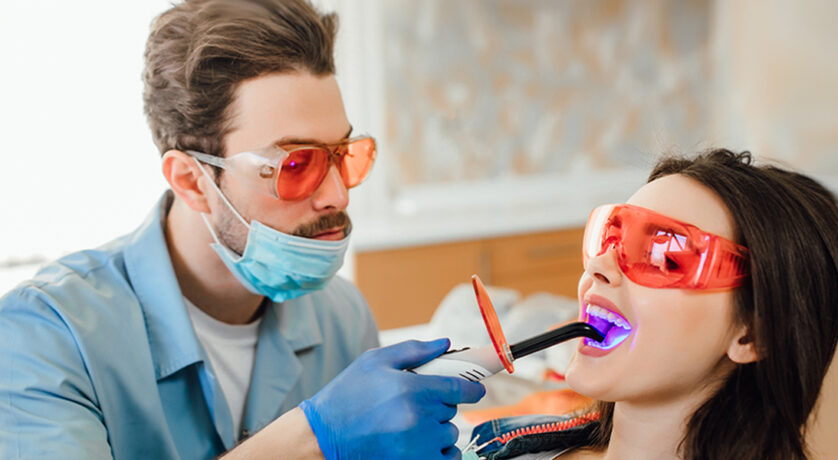What Causes Tooth Discoloration Before Whitening?
July 1, 2025
Types of Tooth Discoloration: Intrinsic vs. Extrinsic
Tooth stains come in two main forms. Each has different triggers and responds differently to whitening.
- Extrinsic stains are surface-level. These come from things like coffee, tea, red wine, or tobacco. They sit on the outer enamel and often respond well to whitening.
- Intrinsic stains live deeper in the tooth. These may come from trauma, medications, or internal changes in the tooth structure. Whitening may not work as well for these, depending on the severity.
If you’re not sure which one you have, visiting a dentist near you can help clear up the mystery. A trained eye can pinpoint what kind of stain you’re dealing with—and what to do next.
Dietary Habits That Stain Teeth
You may love your morning coffee or your glass of red wine with dinner. But these everyday habits add up and leave their mark.
Foods and drinks that stain teeth include:
- Coffee and black tea
- Red wine
- Berries and dark fruit juices
- Soy sauce and tomato-based sauces
- Cola and dark sodas
These items contain dark pigments and acids that cling to enamel. Over time, they dull the brightness of your smile. If you find yourself consuming them regularly, consider rinsing your mouth afterward or drinking through a straw to reduce contact.
One visit to a local dentist or a dentist in 07601 can help you get a grasp of how your diet is affecting your teeth—and what simple changes can keep your smile brighter.
Lifestyle Choices and Their Impact
Certain lifestyle habits quietly affect tooth color more than people realize. Smoking and tobacco use are top offenders. The tar and nicotine in cigarettes and chew products create a yellow or brown film that’s hard to remove.
Other habits that contribute to staining:
- Poor brushing technique
- Irregular dental cleanings
- Grinding or clenching teeth
- Skipping water during meals
When these habits become routine, stains deepen and become harder to treat. Regular cleanings at a dental clinic in Hackensack, if you are from that area, help stop this damage early and keep your teeth in good shape.
Age-Related Tooth Discoloration
As we age, enamel thins, and the inner part of the tooth (called dentin) becomes more visible. Dentin is naturally yellowish. When enamel wears down, your teeth reflect more of that color.
Older adults may also see:
- Deeper grooves on the tooth surface
- More exposure to staining foods over the years
- Weakened enamel due to years of brushing or grinding
Teeth change, just like the rest of your body. Professional teeth whitening can help reverse years of stains, but results may vary with age. The better you know your teeth, the better you can care for them.
Medical Causes of Tooth Discoloration
Sometimes, health factors—not habits—are behind stained teeth. Understanding the medical causes of tooth discoloration can help you and your dentist decide whether whitening is even the right solution. Some medications or health treatments can lead to discoloration, especially when taken long-term or during early tooth development.
Examples include:
- Antibiotics like tetracycline or doxycycline
- Chemotherapy or radiation near the head or neck
- Antihistamines or blood pressure medications
- Excessive fluoride during childhood
When discoloration is caused by these, surface whitening might not fix it. A conversation with the team can point you toward the right solution, whether that’s whitening or something more custom.
Trauma and Tooth Injury
A hit to the mouth doesn’t just hurt—it can leave a long-term mark on your teeth. Whether from a fall, sports injury, or accident, trauma can interrupt blood flow to the tooth. When this happens, the tooth may darken over time.
Some signs of trauma-related staining:
- One tooth is darker than the others
- Gray or brown appearance
- History of injury, even years ago
Injured teeth might not respond well to surface whitening. In these cases, your dentist may suggest internal bleaching or restoration to match your natural color.
Genetic and Developmental Factors
Some people are just born with teeth that are darker or more prone to discoloration. Genes influence the thickness of your enamel and the shade of dentin inside your teeth.
Developmental conditions that affect tooth color include:
- Enamel hypoplasia: Thin or missing enamel
- Dentinogenesis imperfecta: Abnormal dentin formation
- Fluorosis: Caused by too much fluoride during childhood
These conditions shape the way your teeth grow and how they age. If this sounds familiar, working with a cosmetic specialist can help you find the best treatment.
Final Thoughts
Tooth stains aren’t always what they seem. Pinpointing the real cause ensures your whitening results are safe and lasting. Don’t leave it to guesswork—get expert guidance tailored to your smile. Hackensack Dentist is here to help you move forward with clarity and confidence. Schedule your consultation today and take the first step toward a brighter, healthier smile.

